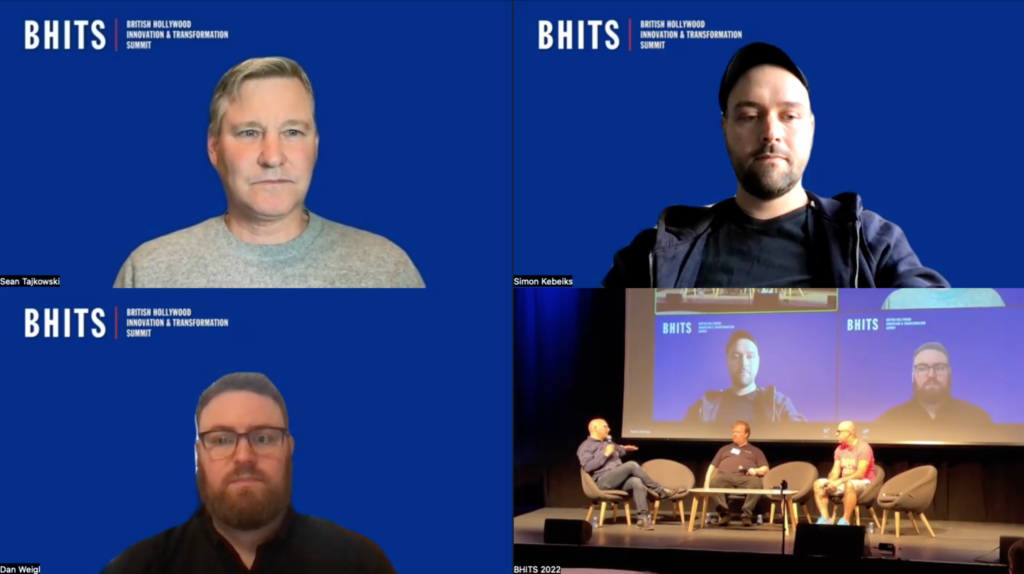M+E Daily

British HITS Panel: The Internet of Things Has Come to Virtual Productions
Story Highlights
So much of filmmaking that historically was done in post-production is now being handled real-time thanks to virtual production sets. But to make those sets and all the equipment handle everything correctly, an adherence to standards must be top of mind.
That was the message panelists of the opening session at the Nov. 15 British Hollywood Innovation & Transformation Summit (HITS) event in London shared: software and digital equipment operate only as well as the digital infrastructure that supports them.
And it’s the data industry — with its decades of hard won experience — that has developed the standards and practices in the design, construction, security, and maintenance of the digital foundational layer to support any data-driven operation, including virtual production sets.
“We’re starting to bring postproduction on the set, and that means creating a postproduction environment,” Sean Tajkowski, technical director of the Media & Entertainment Data Center Alliance (MEDCA), said during the panel “TRANSFORMING M+E: Advocating Data Infrastructure Standards.” “The other thing is we’re sharing a lot more now, lighting talking to cameras, lighting talking to LED walls, where everything is part of a big ecosystem on the network. So, the network must be extremely stable for both productivity and uptime. We can’t have actors and stage crews waiting around because we have deficiency within the network.
“It’s starting to become mission critical now.”
 He and other speakers advocated that M&E facilities must better-adhere to digital infrastructure standards and practices to support a better use experience for filmmakers utilizing virtual production sets.
He and other speakers advocated that M&E facilities must better-adhere to digital infrastructure standards and practices to support a better use experience for filmmakers utilizing virtual production sets.
“Once the [creative part] has been signed off on, the question is how is it going to be shot? That part of the work is de-risking, working under the assumption that a lot of stuff won’t be up to spec, a lot of things won’t quite communicate,” said Brad Blackbourn, virtual production manager for visualization studio The Third Floor. “We have to assume things are not going to be reliable. That’s the safe assumption and that’s what we’re trying to solve. Turn up and test, test, test.”
The end goal is to have confidence, via testing and adherence to standards, that everything will work months before you even show up on the set, he said.
Simon Kebeiks, virtual production technical engineer for virtual production specialist firm Holobay said the amount of computing equipment necessary for a virtual production stage is practically “flying around” and having set people in charge of making sure everything is in its place and adhering to standards is a must.
“When you go onto a set it’s become a requirement that people think more carefully [about
New connected and virtual production stages are all technology based and it’s not just building codes and standards that must be adhered to, according to Tajkowski.
“It’s more of a fragile world at this point because we’re going so fast,” he said. “Our physical infrastructure is just as important as a CPU and there are standards and practices behind our building systems and connected stages. You wouldn’t go and build a postproduction facility and just disregard SMPTE standards just like you wouldn’t build anything data related and disregard those standards as well.”
The British Hollywood Innovation & Transformation Summit, held in conjunction with the EIDR Annual Participant Meeting, was sponsored by Whip Media, GeoComply, Perforce, Signiant, and EIDR, was programmed under the guidance of the content advisors of the Hollywood IT Society, and was produced by MESA and the Hollywood IT Society (HITS).









